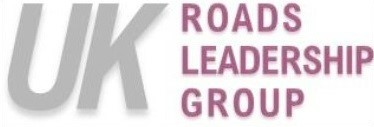
The UKRLG has published (13/05/2021) a range of material to assist highway authorities value the wider economic benefits provided by highway maintenance.
Join other savvy professionals just like you at CIHT. We are committed to fulfilling your professional development needs throughout your career

What’s the value of a highway network? Not just the asset value, but the actual value to the community – for example, protecting and creating business opportunities and jobs, reducing emissions and disruption, and contributing to health benefits. These are difficult questions to answer, and possibly that’s why we usually stick with our more tried and tested measures of road condition, number of bridges restricted, number of LED lights and so on.
The Highway Maintenance Economic Assessment (HMEA) guidance and tool is our first step in valuing the wider economic benefits provided by highway maintenance – and it is intended to sit alongside and build upon our existing approaches of assessing asset condition and deterioration.
A lot of terms and concepts dealt with in HMEA may feel a bit foreign to highway managers, and speaking frankly they are, they sit more in the traditional domain of economists. However, HMEA provides highway managers with an excellent platform to engage with economists and other areas of their local authority to discuss and better understand the important role that highway maintenance plays in delivering economic prosperity. It will take a joint effort between highway teams and other areas of your authority to complete HMEA, because the highways team will not hold all the data required.
The Highways Maintenance Economic Assessment (HMEA) tool and HMEA Collator, are used to process and assess the economic impacts of different road network maintenance scenarios over a specified analysis period. This includes the estimation of impacts to aGVA (approximate Gross Value Added, an estimate of the total output of an economy), Value Added Tax (VAT), Tax from Income, National Insurance Contributions (NIC) and employment with the impacts to road users directly associated with the use of the road network.
In addition, this tool includes the option to calculate the benefit of the network (i.e. the impact on accidents, travel time and CO2) shown by the change in behaviour, and therefore the change in cost, if that traffic was using an alternative network (e.g. traffic on the trunk road network moved to the local road network).
A further option allows the increased income from tolls and road charging to be included in the analysis.
The pre-existing Highways Maintenance Assessment Toolkit (HMAT) is used as part of this process and provides the assessment of the indirect impacts on road users and society from the condition of the road network. The HMAT analysis is separate from HMEA and HMEA accesses the results from the HMAT analyses.
More information here:
{{item.AuthorName}} {{item.AuthorName}} says on {{item.DateFormattedString}}: